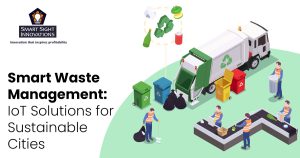 How Will Metaverse Impact E-commerce – Part 1 covered four impacts of the metaverse on e-commerce. Further impacts of the metaverse on e-commerce are detailed in Part 2 of this article.
How Will Metaverse Impact E-commerce – Part 1 covered four impacts of the metaverse on e-commerce. Further impacts of the metaverse on e-commerce are detailed in Part 2 of this article.
Impact of Metaverse on E-commerce
5. Enhanced Visibility for Brand and Social Media
By giving firms more visibility, the metaverse might create a brand-new digital perimeter for public relations. Users will be able to create 3D augmented reality avatars for web browsing and shopping. There are many possibilities available to marketers and virtual reality will surely have an impact on many aspects of the metaverse user experience.
Brands will benefit immensely from virtual showrooms, as this will allow customers to examine things closely before making any purchase. Customers can view their products in a virtual environment before purchasing, to determine whether they like the way they appear and feel. Online showrooms bridge the gap between online and in-person purchasing by reducing the number of order returns for everything from clothing to furniture.
Another way the metaverse can help your brand is by enabling product configuration and personalization. Customers can also try out products in real-time allowing them to determine whether the product meets their needs or not. In social media, the metaverse can help users create and interact in two different zones (Xones). The Personal Xone will help to fill the profile pages as seen in traditional social media and the Community Xone that can be used to host events, launches and gatherings.
6. A Better Corporate Training and Development Program
Artificial intelligence along with immersive technologies like augmented reality (AR), virtual reality (VR) and extended reality (XR) are already having a big impact on business skills training and development. With the metaverse, people can learn more efficiently, remember information better and control their learning processes. This setting resembles the real world while adding technological tools and enabling students to communicate using avatars.
The metaverse offers students a live setting where they can practice making wise decisions in stressful situations. A student can make mistakes in the virtual environment without risking their safety or the safety of others. An interactive engagement strategy, it offers a brand-new digital environment to work together, solve difficulties and practice. By using VR as part of the training experience, learners will be able to study and develop in ways that go beyond a classroom environment.
AR can help in improving the digital experience by merging the outside world with the virtual environment where things can interact with each other. AR is best suited for specialized technical training where students may need quick access to technical data to operate a piece of equipment or information on how to repair a specific machine. The use of AR and VR in the metaverse environment closes the divide between theory and practice.
7. Using NFTs to Monetize Digital Assets
When the metaverse expands into a brand-new territory, enterprises will be able to engage in a single market economy regardless of their location. Stock exchanges and trading platforms housed in the metaverse might have access to a far larger investor pool than those present in the actual world. Blockchain technology will be able to manage ownership, keep accurate records and give companies a way to distribute their products.
The ability to hold and securely exchange virtual assets is one of the main benefits of employing NFTs in the metaverse. There is no chance of fraud or theft because every transaction is recorded on the blockchain. By exchanging assets with cryptocurrencies, non-fungible tokens (NFTs) and digital assets, users can maintain the value of their possessions. The ability to commercialize the virtual assets of a user is one of the key benefits of NFTs in the metaverse. As a result, people can now design digital art, games and other content into items that can be purchased using real currency or tokens.
Examples of Metaverse and E-commerce
The metaverse is already being incorporated into the platforms of several major e-commerce companies. Some examples can be seen below.
- The metaverse technology was introduced into the marketplace as a part of Amazon’s e-commerce development strategy. Its most recent augmented reality buying application — Room Decorator — allows you to use your phone or tablet to see how furniture and other home decor look in your area. You can combine numerous products for viewing and you can even save the augmented reality room images for further review.
- Similar to Amazon, the Swedish furniture giant IKEA entered the metaverse in 2017. Their innovative “Place” app lets you choose a piece of furniture and see how it might appear in your house or office.
- When purchasing a pair of eyeglasses from Warby Parker (an online retailer offering high-quality prescription glasses, contact lenses and sunglasses) you can virtually try on every pair of eyeglasses before making a purchase using their app. As a result, you may buy its products online without worrying about whether they will meet your needs.
- With the launch of Maison Too Faced, Estée Lauder (a multinational cosmetic company) encourages customers to enter the metaverse to experience fully branded, interactive learning and beauty shopping, complete with top picks, interactable brand characters, and the chance to play games to get discount codes.
- For live, animated concerts, Fortnite (an online video game) invited popular artists. Just like at a live show, users participated and interacted with the musicians by dancing and buying digital goods at the end of the performance.
- In 2016, Microsoft introduced HoloLens headsets, bringing in the era of mixed reality (AR and VR). HoloLens allows us to create holographic images in front of us, place them in the actual environment and manipulate them using augmented reality.
- In 2021, Facebook changed its name to Meta to convey its growing ambition beyond social media and enable work and play in a virtual environment.
- The latest venture of the iconic brand Nike, is a metaverse venture called Swoosh. It is a Web 3.0 enabled portal where customers can purchase its virtual goods.













